Best Synthesizer Keyboard Hardware - Under $500 & $1000

Author & Contributors
Alexander Briones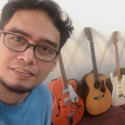
I have been writing about and researching music gear for many years, all while serving as a music director at my local church. I engage in guitar playing and singer-songwriter stints, in addition to mentoring young musicians and teaching guitar and bass.
The Best Synth Keyboards Under $500
Yamaha Reface CP
Cons
- Slim keys can feel cramped
- Limited synth controls
Pros
- Portable design with slim keys
- Easy to get good vintage synth sounds
- Built-in speaker and effects
- Can run on batteries
The Yamaha Reface CP is a portable synth that specializes in vintage keyboard sounds, with built-in stompbox style effects.
It lets you choose between 6 vintage keyboard sounds, and lets you further shape the sound via drive, tremolo, auto-wah, delay and reverb effects, with each effect having their own dedicated controls.
Getting it to sound good is easy with its simple interface, but this also means that there aren't that many parameters to play with.
For a compact 37-key instrument, it comes with 128-note polyphony, built-in stereo speakers with bass reflex, USB, and multiple audio i o ports. This makes it a good fit with modern DAW based setups, while retaining a very portable profile.
Speaking of portable, it can even run for up to 5 hours, on 6 x AA batteries, or you can power it up via a 12V DC power supply.
The downside to its small size is its small keys, it can feel cramped for piano players who are used to full size keys.
Sound quality is good, it can reproduce popular synth sounds really well, even when using the built-in speakers.
Given its size, don't expect the built-in speakers to sound big, but they do have the clarity and punch to get vintage style synth sounds right.
The ability to apply and adjust effects, compliments its synthesizer functions nicely.
If you are looking for a good sounding, portable and easy to use synthesizer, then this should be high on your list.
Specifications
- Polyphony: 128-note Polyphony
- Keys: 37 Mini Synth Keys with Initial Touch
- Oscillator: None
- Filter: None
- Envelope: None
- LFO: None
- Effects: Tremolo, Chorus, Phaser, Delay, Reverb
- Additional Controllers: Sustain jack
- Step Sequencer: None
- Audio Input: 1 x 1/8" TRS (Aux)
- Audio Output: 2 x 1/4" (Left/Right Out) with 1/4" Headphones Out
- Other Connectivity: USB (Type B), MIDI In and Out
- Power: 12V DC power supply (sold separately) / 6 x AA batteries
- Dimensions: 2.37" x 20.87" x 6.87"
- Weight: 4.1875 lbs.
| Website | Source | *Rating Value |
| MusicTech | Andy Jones | 90/100 |
| MusicRadar | Dan 'JD73' Goldman | 90/100 |
Demo
Novation Bass Station II
Cons
- Limited input and output options
- Made of mostly plastic material
Pros
- Great sounding bass synth
- More control options
- Built-in overdrive and distortion filters
- Versatile sub-oscillator for better low-end
As the name implies this is a monophonic synthesizer meant for crafting your own synth Bass Sounds.
It retains the analog synthesizer tone of its predecessor, the classic Bass Station, which was released over 20 years ago, and introduces some new features.
New features include the Acid Filter, which has a diode ladder design that shapes the sound to be smoother and darker. It comes with a 32 pattern Arpeggiator, and a sequencer that lets you create and recall your own patterns.
It has two oscillators, and a sub-oscillator with square, sine, and narrow pulse-width waveforms for better low-end punch.
Like its predecessor, this mono synth excels in providing great sounding bass synth, thanks to its versatile sub-oscillator.
The overdrive and distortion filters blend well with its bass tone, resulting in a gritty sound that works great with modern music styles. These are certainly its standout feature.
It also has quite a lot of controls for its size, and this allows for better control over the resulting sound.
In line with its compact profile, this keyboard is made mostly out of plastic material, but it does feel solidly built. The keys, knobs and faders are also responsive.
Note that it lacks CV Gate inputs and Gate / CV outputs, which is a downside for those who want to connect with other analog equipment they own.
If you are looking for a good bass focused hardware synth that is easy to carry around while having deep control options, then this is for you.
Specifications
- Keys: 25 note synth-action keyboard
- Polyphony: Monophonic
- Oscillator: 1 x Osc 1, 1 x Osc 2, 3 x Sub Osc, 1 x Noise generator
- Filter: 1 x Acid type (diode ladder filter design), 1 x Classic type (derived from original Bass Station)
- Envelope: 1 x Amp Envelope, 1 x Mod Envelope
- LFO: 2 x LFO
- Presets: 64 factory presets
- Effects: Distortion, Oscillator filter mod amount (FM effect created by Oscillator 2 modulating filter freq)
- Additional Controllers: Pitchbend, Mod Wheel
- Step Sequencer: 4 Sequences
- Arpeggitator: 32 Patterns
- Audio Input: 1 x 1/4" TRS input
- Audio Output: 1 x 1/4" TRS output, 1 x 1/4" TRS headphone output
- Other Connectivity: USB MIDI (for connecting & powering Bass Station II via host computer), MIDI IN / MIDI OUT ports on 5 pin din, 1/4" TS Sustain Pedal input
- Power: USB bus powered, 9V DC 300mA
- Dimensions: 18” x 10.75” x 3”
- Weight: 8.5 lbs
| Website | Source | *Rating Value |
| Sound on Sound | Paul Nagle | 90/100 |
| MusicRadar | Jono Buchanan | 90/100 |
Demo
The Best Synth Keyboards Under $1000
Behringer Odyssey 37
Cons
- Bulky profile
- A bit on the heavy side, but still portable
Pros
- Modern clone of the ARP Odyssey
- Filled to the brim with controls and faders
- Lots of extra features including effects
- Tank tough all metal chassis
As the name implies, this is inspired by the iconic ARP Odyssey from the '70s, only this one is reasonably priced and comes with updated features.
Instead of knobs, the Odyssey is filled to the brim with faders, which make it easier to visualize your VCO, VCF and VCA parameters, all of which feature analog signal paths.
All these controls require a bit more extra space, hence the bulky profile of this keyboard synth.
It also comes with a 32-step sequencer, an arpeggiator and a long list of Klark Teknik effects, which include modulation, reverb, delay, pitch shifting and more. It sports 37 full-sized keys that are semi-weighted and velocity-sensitive.
The original ARP Odyssey is a hard act to follow, but the Behringer Odyssey is justified in carrying the iconic name. It brings back old school synth sounds nicely, while having some nifty modern additions that make it easier to integrate into setups.
Feature wise, it can even go toe to toe with high-end software plug-in versions of the Odyssey.
Compared to the original, Behringer made the Odyssey 37 more tank tough, with an all metal chassis, but this also means that it is a bit heavier. Compared to other hardware synths, this high quality synthesizer keyboard is very affordable.
If you're looking for a classic sounding keyboard synthesizer that doesn't take too much of your budget then this is for you.
Specifications
- Polyphony: Mono/Duophonic
- Keys: 37 Full-Size Velocity Sensitive and Semi-Weighted Keys
- Oscillator: 2 x Analog VCO, Square Pulse, Sawtooth, Pulse-Width Modulation
- Filter: 2-pole MKI, 4-pole MKII, 4-pole MKIII
- Envelope: 1 x ADSR, 1 x AR
- LFO: 1 x LFO waveforms (Sine, square)
- Effects: Reverb, Chorus, Flanger, Delay, Pitch Shifter
- Additional Controllers: None
- Step Sequencer: 32-steps, 64 patterns
- Audio Input: 1 x 1/4" TS (audio in)
- Audio Output: 1 x XLR (High)1 x 1/4" TS (Low), 1 x 1/4" (headphones)
- Other Connectivity: USB (Type B), CV in/out, Gate in/out, Trig in/out
- Power: 9V DC power supply included
- Dimensions: 7.9" x 26.2" x 19.5"
- Weight: 22.7 lbs.
| Website | Source | *Rating Value |
| MusicTech | Dave Gale | 90/100 |
| YouTube | SecretRadio | 96/100 |
Demo
Yamaha MX61 Music Synthesizer V2
Cons
- Steep learning curve
- Not for analog synth purists
- Limited synth controls
Pros
- All-in-one keyboard, MIDI controller and synthesizer
- Great sounding presets and effects
- Good integration with popular DAWs
- Quite portable given its features
- Responsive keys and controls
The Yamaha MX61 is a digital synthesizer keyboard that utilizes a digital audio engine, resulting in a wide array of sounds and expanded synthesis controls.
This will not appeal to purists, but it can be a practical choice for keyboardists who are looking for a versatile keyboard with sound synthesis.
With over 1000 MOTIF XS voices, there's already a wide range of sounds and options to work with, then factor in its built-in effects and oscillators and filters - what you get is a super versatile instrument. And this expanded sound selection is another advantage of a digital synth.
It's not just versatility though, because most of the presets really sound good, fine tuned for mimicking popular synth and keyboard sounds used in popular songs.
Controls are a bit limited, compared to analog synths, but you can do a lot more when it is integrated with a DAW or app. Given its expansive features, learning curve is quite steep, but learning the features is well worth it.
Speaking of controls, it comes with 61 full size synth style keys with velocity sensitivity. This means that you can play this instrument like a traditional keyboard/piano and switch to synth style playing as needed.
It's class-compliant USB audio/MIDI interface makes this a great centerpiece for home studio setups. It has deep controller integration with popular music production software.
All these features are packed inside a lightweight unit which is makes it easy to carry around. The Yamaha MX61 is definitely worth checking out if you're looking for a modern synthesizer/keyboard for gigging or for home studio use.
Specifications
- Polyphony: 128-note voice polyphony
- Keys:61 Synth-action, touch sensitive keys
- Oscillator: AWM2 Oscillator with LFO
- Filter: HPF, LPF, BPF, BEF, Envelop Generator, Scale
- Envelope: Amplitude, Filter
- LFO: 1 x LFO waveform
- Effects: Reverb, Delay, Chorus, EQ, Flanger, Phaser, Tremolo, Rotary, Distortion, Compression, Wah, Lo-Fi, Modulator, Vocoder, Pitch Change etc
- Additional Controllers: None
- Step Sequencer: 208 patterns, SMF Format 0 (playback only)
- Audio Input: 1 x 1/8" (Aux in)
- Audio Output: 2 x 1/4" (Main out), 1 x 1/4" (Headphones)
- Other Connectivity: USB (Type B & Type A), MIDI in/out
- Power: 12V DC power supply (included)
- Dimensions: 4.4" x 38.7" x 11.7"
- Weight: 10.6 lbs.
- Software Bundle: Cubase AI included, FM Essential iOS synth app
| Website | Source | *Rating Value |
| PianoDreamers | Lucas Welter, Shao Ren | 84/100 |
Demo
Things to Consider When Buying a Keyboard Synth
-
Polyphony / Number of Voices
Polyphony is defined by the number of notes that can be played simultaneously. There are two main types: Monophonic Synth and Polyphonic Synth.
Monophonic synths play one note at a time. A good number of synth players tend to favor monophonic synthesizers due to their rich, full and pronounced sound compared to polyphonic synths. These are often used to create full sounding lead, bass synth parts, and synth pads that easily jump out of the mix.
Polyphonic synths, on the other hand, let you play multiple notes all at once. They allow for more complex sound design. Although they sometimes sound a bit thinner, they tend to have the essential options and are capable of letting you play leads and chords.
-
Size and Portability
Choosing the size depends on where you will plan to use your synth. A small and compact synthesizer with less than 49 keys is recommended if you have limited space. They're also easier to carry around for live performance purposes or if you plan to jam with others in their own domain. Another important portability factor to consider is the ability to run on batteries. Bigger and heavier synths are meant for a more permanent setup, much like a heavy acoustic piano.
-
Controls and Interface
Synthesizers come with different interfaces and controls yet they all function in similar ways following the basic signal path: oscillator, filter, then an amplifier. Most Synthesizers have the basic waveforms shape for built-in LFOs, envelope generator with ADSR sliders, and at least one control for effects used to enhance the sound. Some synthesizers with more than one modulator have a Modulation Matrix or Mod Matrix, which is a grid that's used to intuitively route modulation sources easily to their destinations (LFO to filter cutoff, mod envelope to pitch, etc).
It's highly suggested to get a synthesizer that gives you a straightforward layout of knobs, sliders and buttons without needing to look through menus, or having to do multiple combinations of buttons.
-
Other Features
A common feature found in synthesizers is a built-in sequencer. This is useful if you want to write and save melodies or bass lines in the synthesizer's memory bank, and loop them while tweaking other parameters. Some synthesizers also have stored percussion and drum sequencers for creating beats.
-
Value
A lot of synthesizers on the market have numerous functions that may factor in your sound preference and productivity. If you need a full polyphonic synth without breaking the bank, digital synths are the best option. They are also the best choice if you're unable to choose between Synthesizer vs Keyboard. Monophonic analog synthesizers are also great entry level and budget options if you are new to synthesis.
Best Keyboard Synthesizers Selection Methodology
The first edition was published in 2017 written by Denise Azucena and the current edition was written by Alexander Briones.
We first looked at all the best synths available from major online American music gear retailers that have a street price up to $1000. And for this edition, we ended up with even more synths on our short-list for closer examination, which summed to 25. This includes other popular synth keyboards that didn't make it to the list, like the Roland JD Xi and Behringer Deepmind - you can see the list in the Music Gear Database.
Next, we collected and analyzed over 9,900 rating and review sources. This data includes feedback from review websites, retailers, discussion forums and major music gear publications, including the most recent reviews. All these data were then processed via the Gearank Algorithm to produce our ratings scores out of 100 for each synth. We used the resulting ratings to rank the synths in a way that closely reflects market sentiment. Finally, we divided the list to 2 price ranges, sub $500 and sub $1000. For more information about our methods see How Gearank Works.
About the Author and Contributors
Here are the key people and sources involved in this guide's production - click on linked names for information about their music industry backgrounds.
Lead Author & Researcher
Alexander Briones
I have been writing about and researching music gear for many years, all while serving as a music director at my local church. I engage in guitar playing and singer-songwriter stints, in addition to mentoring young musicians and teaching guitar and bass.
The Yamaha MX61 is my favorite among those featured in this guide, mostly because it is a practical choice for those who regularly gig. Still, I wouldn’t say no to playing on an analog synth like the Bass Station II, if its available at the studio or venue.
Contributors
Jason Horton: Editing and Illustrating.
Media
Main/Top Image: Compiled using photographs of the Behringer Odyssey 37, Yamaha Reface CP and Yamaha MX61 V2.
The videos have been embedded in accordance with YouTube's Terms of Service.
The individual product images were sourced from websites, promotional materials or supporting documentation provided by their respective manufacturers with the exception of the additional Orange Micro Dark photographs which were taken by Raphael Pulgar.





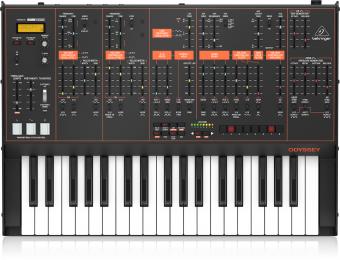

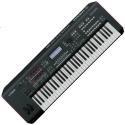
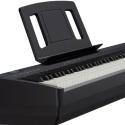
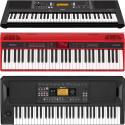
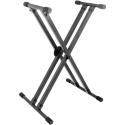
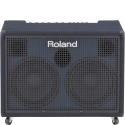
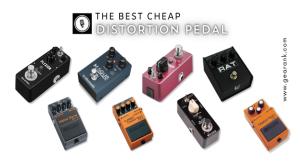
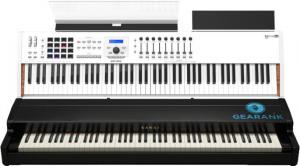
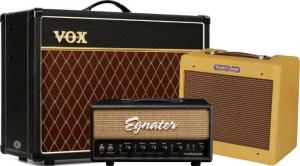
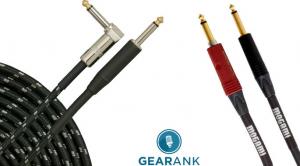
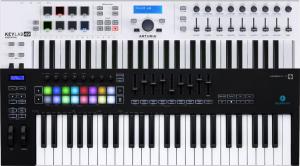
Comments
The following synths came off
Submitted by Jason Horton on
The following synths came off the recommended list above when we published the December 2022 Edition:
We have removed the Moog
Submitted by Jason Horton on
We have removed the Moog Subsequent 25 due to a price increase above $1000 that made it ineligible for this guide.
We have removed the Korg
Submitted by Jason Horton on
We have removed the Korg minilogue from the recommended list above due to a price increase that put it above the $500 limit for the section it qualified for.
The publication of our April
Submitted by Jason Horton on
The publication of our April 2021 edition resulted in the following synths coming off the recommended list above, but you can still see our analysis of them:
Today we removed the
Submitted by Jason Horton on
We have removed the following keyboard from the recommended list above due to a price increase, but you can still read our analysis of it: Roland JUNO-DS88.
As a result of our March 2020
Submitted by Jason Horton on
As a result of our March 2020 update, the following synths came off our recommended list above but you can still see our analysis of them:
We removed the because its
Submitted by Jason Horton on
We removed the Teenage Engineering OP-1 because its price went above the $1000 price limit for this guide.
Today we removed the
Submitted by Jason Horton on
Today we removed the following synth from our recommended list above, due to a lack of availability, but you can still read our analysis of it: Dave Smith Instruments Mopho x4.